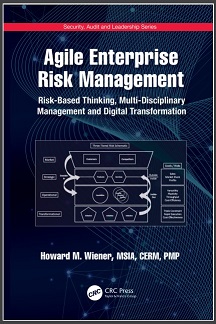Welcome to the blog.
If you run an enterprise or other organization of any scope, your life is inextricably intertwined with technology even if your organization doesn’t make or sell software or provide technology services.
Why is that? It’s because traditional products and services are increasingly being paired with digital add-ons—services surrounding your customers’ purchase journey from initial discovery through purchase and ongoing support or complementary services that enhance the value of their purchases. It’s also because insights required to create digital value are increasingly teased out of massive quantities of scrupulously-cleansed and engineered data processed by Machine Learning algorithms and deployed as Artificial Intelligent models. And, it’s all enabled by Cloud-based services that make it possible for smaller and early-stage companies to take advantage of computing resources that used to be the province of large, established companies that could afford the infrastructure to exploit cutting-edge information technology.
If you’re not a CIO or a CTO, you’re quite likely torn with how much of your time you need to spend getting yourself up to speed. Though, if you are a CIO or CTO, you’re probably spending plenty of time trying to stay current, regardless.
Your goal is to make your organization as agile as you possibly can because only your ability to evolve at speed will enable you to maintain your competitiveness. Doing that will take a lot more than just technology adoption. You’re going to need to transform your organization and your approaches to how you do a lot of things.
Agility is the most important enabler of sustainability. If you cannot recognize and react to threats and opportunities with alacrity, you will be swallowed up by competitors who can.
But what does it take to become agile? It’s a combination of many things—culture, processes and technology, among them. However, you don’t just adopt new processes or implement new technology and suddenly become agile. It’s a journey, one in which you will have to give up the way that you used to think about things and adopt new approaches. You will have to stop building things as if you expect them to have way longer useful lives than they are likely to. You will have to get used to “just-in-time,” “just-enough” and “minimum-viable.” You will need to stop spending way too much time designing things in detail and just wade into implementing them, learning as you go. You will have to adopt a new way of thinking about your organization and how your people are developed, teamed and utilized. You will have to learn to do things for only as long as they make sense and then evolve to something new when they no longer do.
We are now living in a world of constant change. Windows of opportunity will be narrower than ever, and threats will pop up with less and less warning. If you are not constantly surveilling your environment, you are likely to miss something that can benefit or hurt you greatly.
You will need to learn to optimize your OODA loop—Observe, Orient, Decide, Act—which lies at the heart of your ability to make sense of and respond to what you’re seeing. The most important thing you can do to shorten the loop and become more agile is prepare. You need to develop the classic PPT enablers—people, processes and technologies—that can position you to increase your decision-making velocity and accuracy.
You will also need to adopt new strategies and tactics for attracting and retaining an A-player workforce, whether they’re your employees or contracted staff, working on-site, hybrid or remote. Education is going to undergo some major rethinking and there may well be opportunities for you to gain advantage by becoming an education provider.
This site is intended for you non-technocrats that have the responsibility for transforming your organization and are aiming to keep the rest of it in pace with your digital strategists and technologists. The navigation bar, above will allow you to browse by subject area or date.
So, have a look and feel free to comment. I welcome your observations and questions.
Thanks for visiting.
